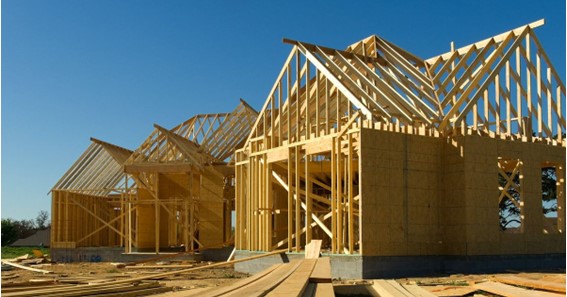Are you curious to know what is sheathing plywood? You have come to the right place as I am going to tell you everything about sheathing plywood in a very simple explanation. Without further discussion let’s begin to know what is sheathing plywood?
When it comes to construction and woodworking projects, various types of plywood are used for different purposes. One commonly used plywood product is sheathing plywood. Designed specifically for structural applications, sheathing plywood plays a crucial role in providing strength, stability, and durability to buildings. In this blog post, we will delve into what sheathing plywood is, its characteristics, and its wide range of applications in the construction industry.
What Is Sheathing Plywood?
Sheathing plywood, also known as structural plywood or CDX plywood, is a type of plywood specifically engineered for use in building construction. It is typically made from multiple layers or plies of wood veneers, bonded together with a strong adhesive, using a cross-grain construction technique. The layers are alternately aligned to enhance the plywood’s strength and stability.
Characteristics Of Sheathing Plywood:
- Thickness and Size: Sheathing plywood is available in various thicknesses, commonly ranging from 3/8 inch to 3/4 inch (9mm to 19mm). The standard size is 4 feet by 8 feet (1.2m by 2.4m), but other dimensions may be available depending on regional standards.
- Wood Species: Sheathing plywood can be made from different wood species, including pine, fir, spruce, or a combination thereof. The specific species used may vary based on regional availability and requirements.
- Exterior Grade: Sheathing plywood is typically manufactured with an exterior grade bond, meaning it is designed to withstand exposure to moisture and weather elements. This characteristic makes it suitable for applications where the plywood will be exposed during construction before being covered by other materials.
- Surface Appearance: Sheathing plywood often has a rougher appearance compared to other plywood types. It may feature visible wood grain, patches, or minor imperfections on the surface, as it is primarily designed for structural use rather than aesthetics.
Applications Of Sheathing Plywood:
Sheathing plywood serves a wide range of applications in the construction industry, where structural integrity and stability are paramount. Some common uses include:
- Wall and Roof Sheathing: Sheathing plywood is commonly used as a base material for exterior walls and roofs. It provides a stable surface to attach exterior cladding, siding, or roofing materials, enhancing the overall strength and durability of the structure.
- Subflooring: Sheathing plywood is often employed as a subfloor material, providing a sturdy and stable base for finished flooring. It helps distribute the load evenly across the floor joists, ensuring a solid foundation for walking surfaces.
- Shear Walls: Sheathing plywood is used to construct shear walls, which are structural elements designed to resist lateral forces caused by wind or earthquakes. Shear walls made with sheathing plywood help transfer these forces to the foundation, enhancing the building’s overall stability.
- Temporary Construction Protection: During the construction process, sheathing plywood can be used to temporarily cover openings, protect structures, or serve as a barrier against the elements until the permanent materials are installed.
Conclusion:
Sheathing plywood plays a vital role in the construction industry, providing strength, stability, and durability to buildings. Its structural characteristics, exterior grade construction, and wide range of applications make it a versatile material for wall sheathing, roof decking, subflooring, and more. Whether you’re constructing a residential home, commercial building, or undertaking a woodworking project, sheathing plywood is an essential component that contributes to the integrity and longevity of the structure.
You can know much more information on Caresguru
FAQ
What’s The Difference Between Plywood And Sheathing Plywood?
Plywood sheathing (OSB or plywood) is often mistaken for plywood underlayment. They are not the same. Plywood sheathing is most often used to construct the structural sub-floor. Plywood sheathing can either be OSB or all plywood.
Is Sheathing Stronger Than Plywood?
Building codes, the Engineered Wood Association, architects and most builders rate plywood and oriented strand board (OBS sheathing) equal in strength and durability.
What Is Sheathing Ply Used For?
Sheathing ply is an exterior grade plywood, often used for roofing on sheds or boarding up windows/ doors. This type of plywood is cheaper than Far Eastern ply and is stronger than OSB, this along with the fact that we supply this board in 9, 12, and 18mm thicknesses means that this is a very versatile product.
What Grade Of Plywood Is Used For Sheathing?
Sheathing is normally rated CDX, with a C-grade face, D-grade back and X for weather exposure.
I Have Covered All The Following Queries And Topics In The Above Article
What Is Plywood Sheathing
What Is Plywood Sheathing Used For
What Is Sheathing Plywood Used For
What Type Of Plywood Is Used For Roof Sheathing?
What Is Rtd Sheathing Plywood
What Is Rtd Sheathing Plywood Used For
What Kind Of Plywood Is Used For Sheathing
What Size Is Plywood Sheathing
What Plywood Product Is Commonly Used As Roof Sheathing
Sheathing Vs Plywood
Is Sheathing Plywood Waterproof
Sheathing Plywood For Cabinets
Sheathing Plywood Vs Osb
What Is Osb Plywood
Exterior Plywood
Is Sheathing Plywood Treated
A Grade Plywood
What Is Sheathing Plywood
Is sheathing as strong as plywood
What is sheathing plywood?
